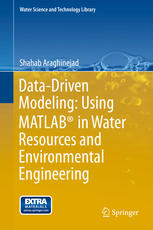

Most ebook files are in PDF format, so you can easily read them using various software such as Foxit Reader or directly on the Google Chrome browser.
Some ebook files are released by publishers in other formats such as .awz, .mobi, .epub, .fb2, etc. You may need to install specific software to read these formats on mobile/PC, such as Calibre.
Please read the tutorial at this link: https://ebookbell.com/faq
We offer FREE conversion to the popular formats you request; however, this may take some time. Therefore, right after payment, please email us, and we will try to provide the service as quickly as possible.
For some exceptional file formats or broken links (if any), please refrain from opening any disputes. Instead, email us first, and we will try to assist within a maximum of 6 hours.
EbookBell Team

0.0
0 reviews“Data-Driven Modeling: Using MATLAB® in Water Resources and Environmental Engineering” provides a systematic account of major concepts and methodologies for data-driven models and presents a unified framework that makes the subject more accessible to and applicable for researchers and practitioners. It integrates important theories and applications of data-driven models and uses them to deal with a wide range of problems in the field of water resources and environmental engineering such as hydrological forecasting, flood analysis, water quality monitoring, regionalizing climatic data, and general function approximation.
The book presents the statistical-based models including basic statistical analysis, nonparametric and logistic regression methods, time series analysis and modeling, and support vector machines. It also deals with the analysis and modeling based on artificial intelligence techniques including static and dynamic neural networks, statistical neural networks, fuzzy inference systems, and fuzzy regression. The book also discusses hybrid models as well as multi-model data fusion to wrap up the covered models and techniques.
The source files of relatively simple and advanced programs demonstrating how to use the models are presented together with practical advice on how to best apply them. The programs, which have been developed using the MATLAB® unified platform, can be found on extras.springer.com.
The main audience of this book includes graduate students in water resources engineering, environmental engineering, agricultural engineering, and natural resources engineering. This book may be adapted for use as a senior undergraduate and graduate textbook by focusing on selected topics. Alternatively, it may also be used as a valuable resource book for practicing engineers, consulting engineers, scientists and others involved in water resources and environmental engineering.